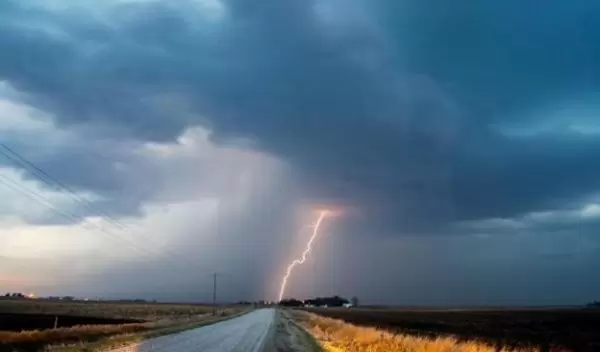
Heavy rainfall drives one-third of nitrogen runoff, according to new study
Heavy rain events that occur only a few days a year can account for up to one-third of the annual nitrogen runoff from farmland in the Mississippi River basin, according to a new study by Iowa State University scientists.
The U.S. National Science Foundation-funded research, published in Communications Earth & Environment, uses innovative computer modeling techniques to quantify nitrogen runoff from land ecosystems into rivers and streams. Nitrogen fertilizers applied to Midwestern agricultural land can make their way down the Mississippi River, where they contribute to a hypoxic (low or depleted oxygen) zone in the Gulf of Mexico.
The findings could inform farm management practices such as the timing and application of nitrogen fertilizers to reduce those effects, said the study's lead author, Chaoqun Lu.
Lu harnessed computer modeling to simulate various ecological processes. Her previous work looked at how agricultural land stores carbon, a process known as carbon sequestration. For this paper, Lu and her colleagues used modeling approaches and publicly available water quality data dating back to 1980 to analyze how precipitation affects nitrogen loading in Midwestern waterways.
Lu said previous studies have shown that years with high rainfall totals also see higher nitrogen loading from land to waterbodies. But the new study looked closely at extreme rainfall events throughout the Mississippi River basin, defined as any rainfall that exceeds the 90th percentile of historical daily precipitation records for a location in one month.
Basin-wide, extreme precipitation events occurred only 8.6 days per year on average but contributed to approximately one-third of annual total nitrogen yields, according to the data.
"What attracted us to these questions is that heavy rainfall occurrences can be very localized," Lu said. "You see rainfall here and there, and it occurs in different periods of the year. We wanted to see if we could combine long-term monitoring data and modeling tools that account for those differences and get a better look at how they affect nitrogen loading."
Added Laura Lautz, a program director in NSF's Division of Earth Sciences, "This research shows that, although extreme rain events may happen only a few days each year, they can have an outsized influence on nitrogen loads. Knowing this, we can take an informed and targeted approach to managing farm practices to mitigate nutrient discharge to the Gulf."
